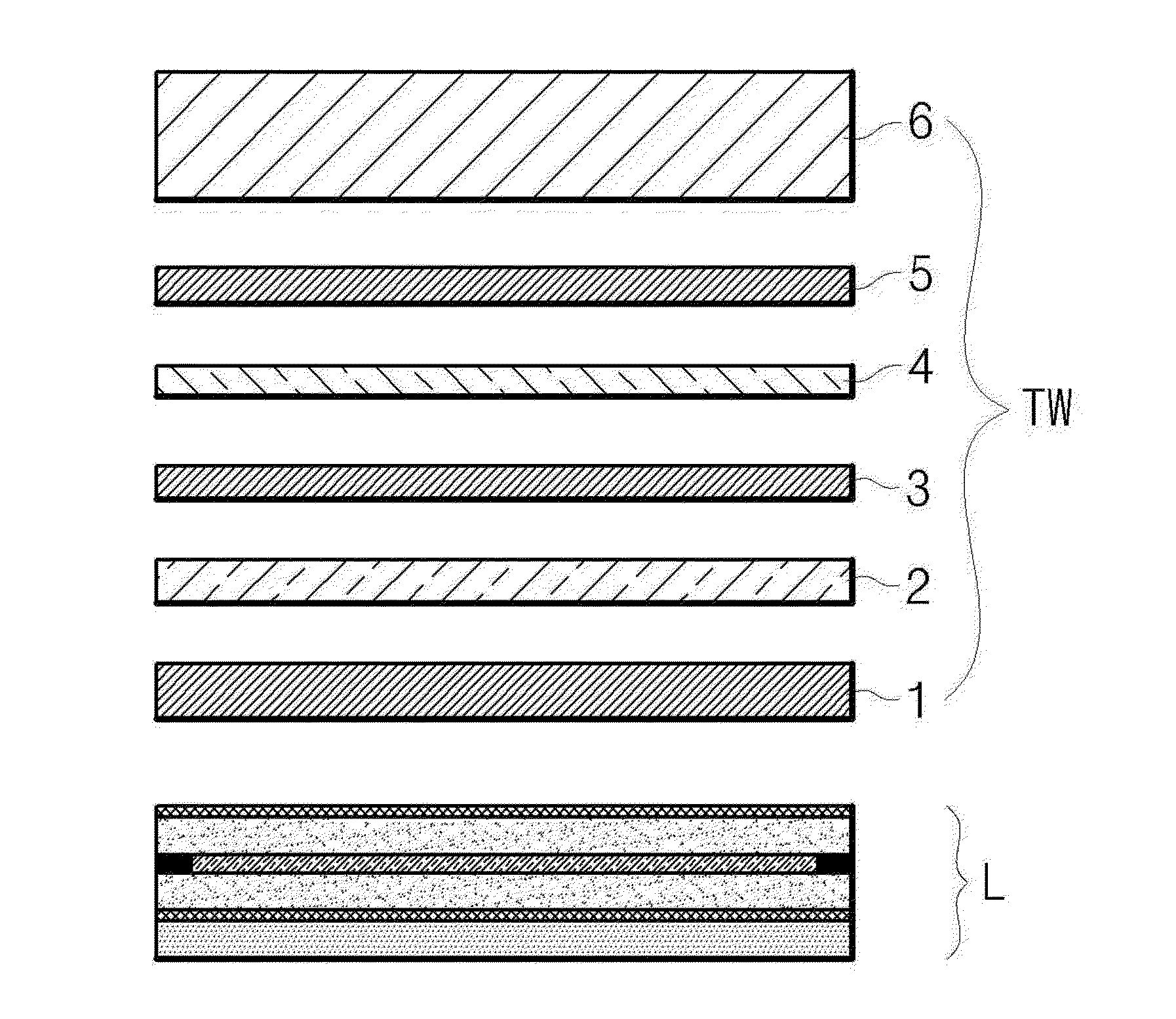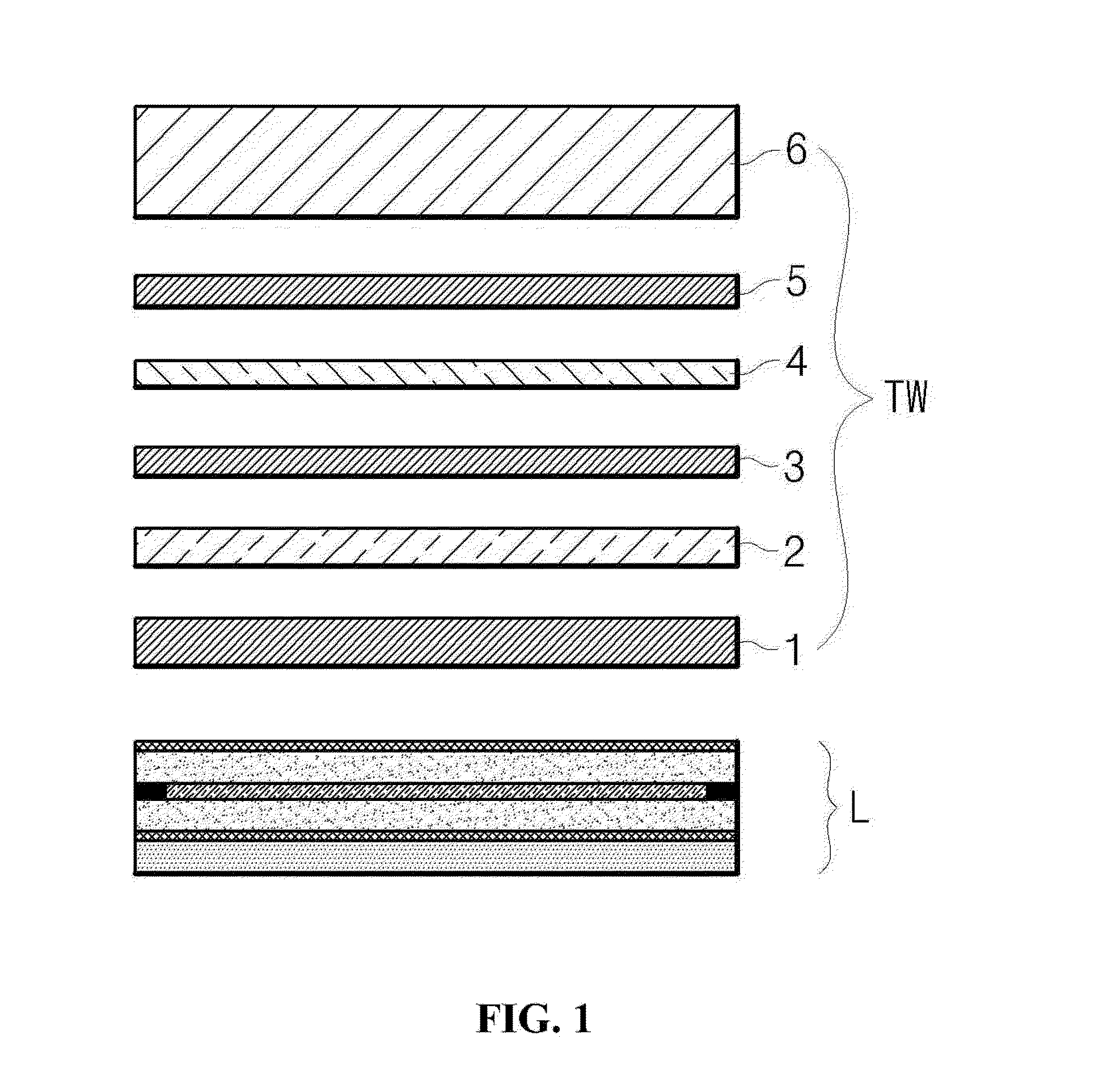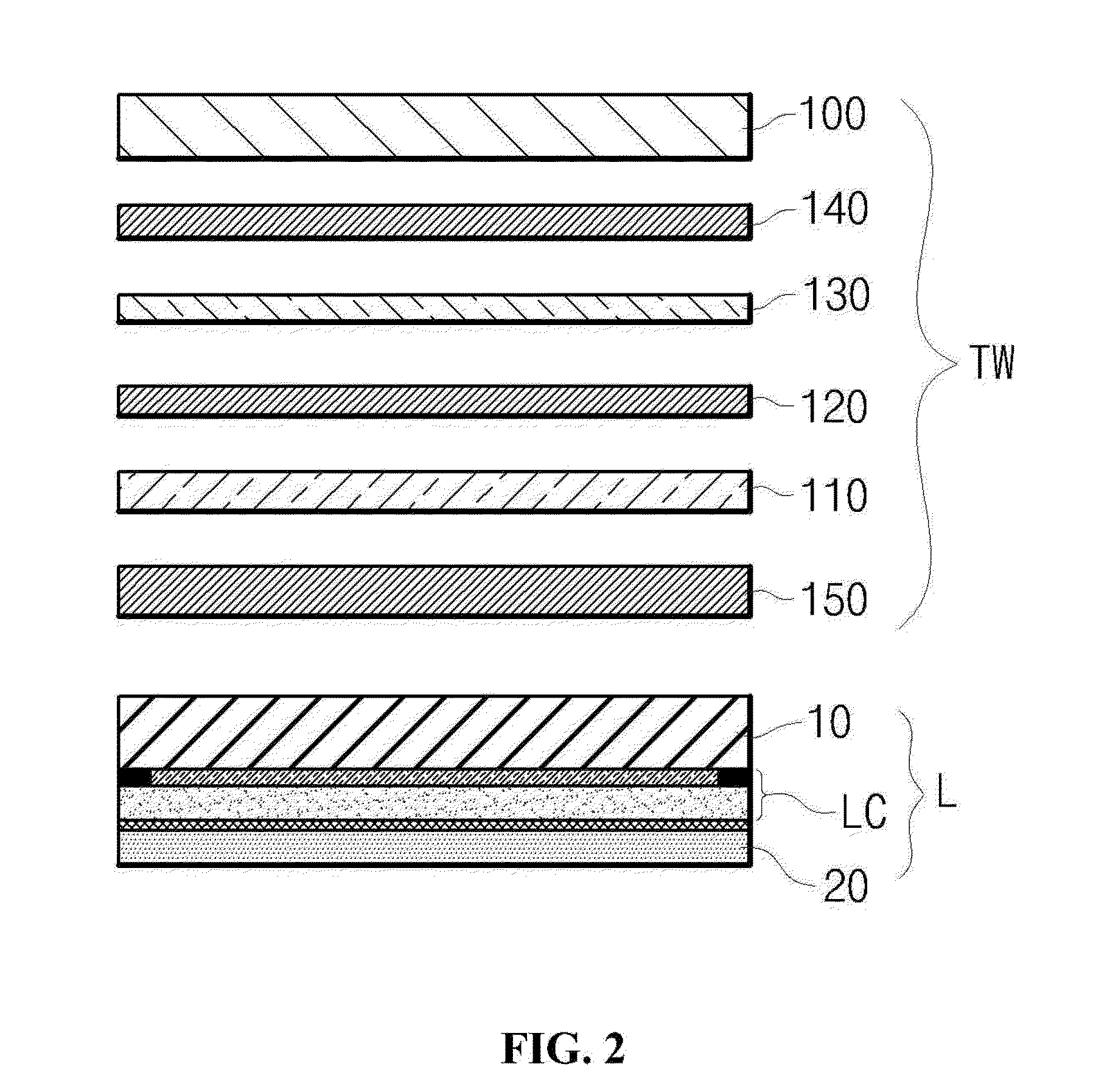Integrated touch screen
- Summary
- Abstract
- Description
- Claims
- Application Information
AI Technical Summary
Benefits of technology
Problems solved by technology
Method used
Image
Examples
first exemplary embodiment
(1) FIRST EXEMPLARY EMBODIMENT
[0028]A structure according to this exemplary embodiment is explained with an example which implements in detail the structure of FIG. 2. That is, as illustrated in FIG. 3, a touch sensor module may be formed in the structure including base substrates 130 and 110, and sensing electrodes 132 and 112 patterned on one surface of the base substrate or on other surface opposed to the one surface. That is, the touch sensor module may include: a first sensing electrode pattern layer 130 bonded to the transparent window 100 via a first adhesive material layer 140, and having the sensing electrode pattern 132 on one surface; and a second sensing electrode pattern layer 110 bonded to other surface of the first sensing electrode pattern layer via a second adhesive material layer 120, and having the sensing electrode pattern 112 on one surface. In particular, in this case, the first sensing electrode pattern 132 and the second sensing electrode pattern 112 may be f...
second exemplary embodiment
(2) SECOND EXEMPLARY EMBODIMENT
[0030]Unlike the structure of FIG. 3, but like the structure of FIG. 4, when implementing the sensor electrode pattern layer, the sensing electrode 232 pattern is formed on both surfaces of the base substrate 230. In view of this, there is a difference between the structures. Moreover, a protective film 210 for protecting the sensing electrode pattern of a lower surface of the base substrate 230 may be further included.
third exemplary embodiment
(3) THIRD EXEMPLARY EMBODIMENT
[0031]Explaining a structure of the third exemplary embodiment with reference to FIG. 5, FIG. 4 illustrates other structure of the sensing electrode pattern layer according to still another exemplary embodiment of the present invention. That is, a transparent window 300 is formed, a sensing electrode pattern 312 is patterned on a sectional surface of a base substrate 310, and a wiring part 311 is simultaneously formed with the sensing electrode pattern. The first and second sensing electrode patterns are implemented on the same plane as each other. The first sensing electrode layer for determining a first axis (for example, an X axis) component of a contact may be patterned on one surface, and the second sensing electrode layer for determining a second axis (for example, a Y axis) component of a contact may be patterned by implementing a disposition in which the second sensing electrode layer is insulated from the first sensing electrode layer.
[0032]Of ...
PUM
 Login to View More
Login to View More Abstract
Description
Claims
Application Information
 Login to View More
Login to View More - R&D
- Intellectual Property
- Life Sciences
- Materials
- Tech Scout
- Unparalleled Data Quality
- Higher Quality Content
- 60% Fewer Hallucinations
Browse by: Latest US Patents, China's latest patents, Technical Efficacy Thesaurus, Application Domain, Technology Topic, Popular Technical Reports.
© 2025 PatSnap. All rights reserved.Legal|Privacy policy|Modern Slavery Act Transparency Statement|Sitemap|About US| Contact US: help@patsnap.com



